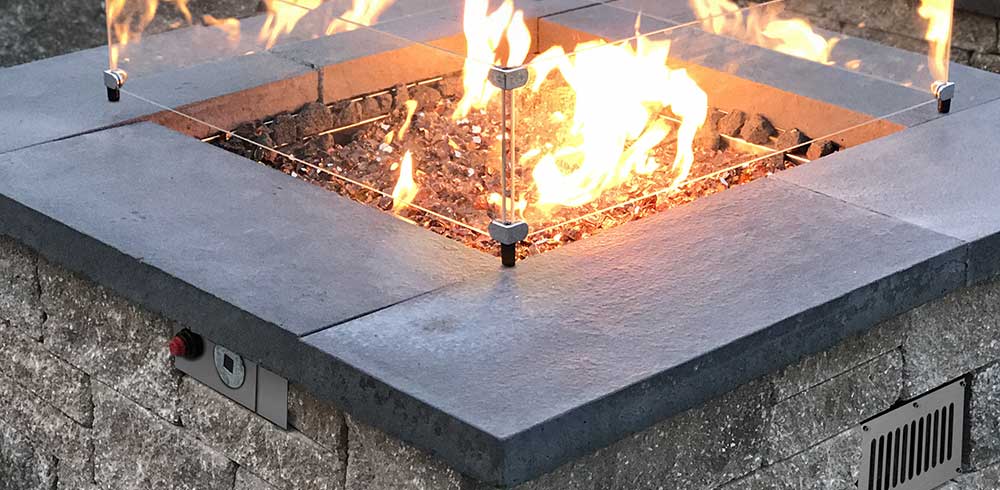
If you're in the business of installing gas fire pits or building custom fire features using fire pit kits, you'll want to know all you can about the various ignition types and control options available so you can present them to your clients. You're the expert when it comes to things like landscaping, carpentry, homebuilding or design, but you may not have time to learn all the ins and outs of fire pit ignitions, which is why you've come to Spotix, the experts in all types of fire features.
We've put together this handy guide to walk you through the various fire pit voltage and control options on the market. We'll go through the ignition types you can choose from, explain how they work and offer a quick explanation of when and why you'd recommend each one to your customers. Once you've read this guide, you'll be able to guide your clients to the right fire pit ignition type for any project.
Types of Fire Pit Ignitions
To start, we'll quickly lay out the types of fire pit ignitions on the market to make it easier to understand how voltage and control options interact with each. Not all of these ignition types will be relevant later on in this article, but it will help to understand the broader picture.
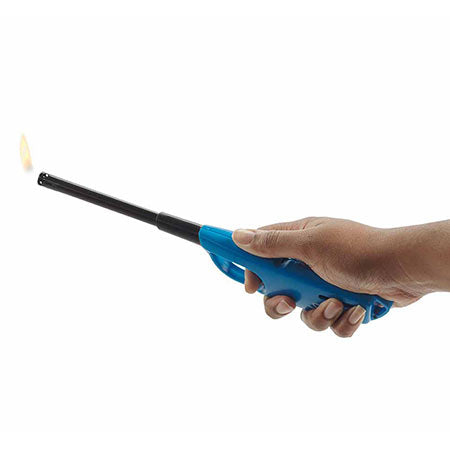
Match Light Ignitions
These are the simplest to install and operate. Simply hook up the fuel supply, turn on the gas and apply a flame to the burner using a match or lighter. These ignition types are almost universally the cheapest as well, making them a popular choice for budget-conscious buyers. In some areas, match light fire pits may not be approved for commercial installations.
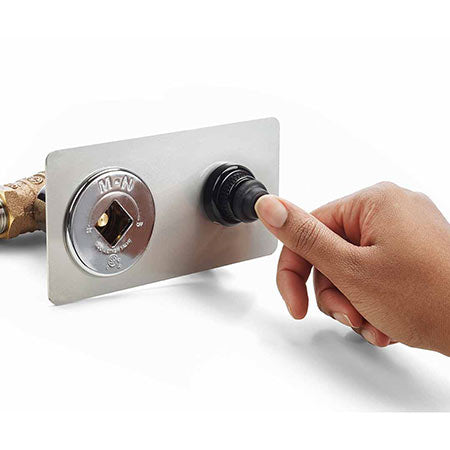
Spark Ignitions
Similar to the type of ignitions seen on most gas grills, a spark ignition uses a standard household battery and a simple push-button switch to launch an electrical spark at the burner to ignite it. Only slightly more complex to use than a match light model, the main drawback is the need for a battery, which can corrode depending on weather conditions and maintenance. These ignition types may not be approved for commercial installations in some areas.
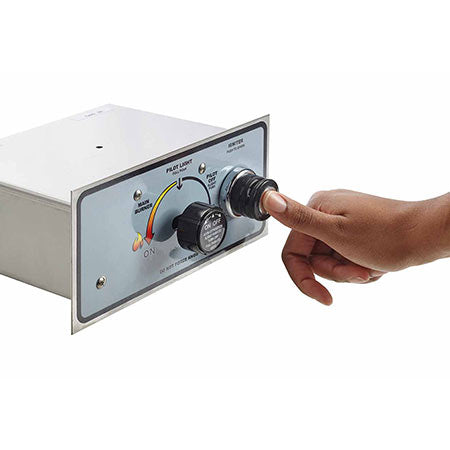
Flame Sensing Ignitions
Similar to a spark ignition, the main difference that flame sensing ignitions offer is the ability to shut off the fuel supply if the burner is extinguished. They do this using a device known as a thermocouple, which uses heat to create an electrical signal. If the thermocouple stops sensing heat, it stops producing this electrical signal, which tells the ignition to cut off the fuel supply. This mechanism makes them safer than a standard spark ignition, and no external power is required.
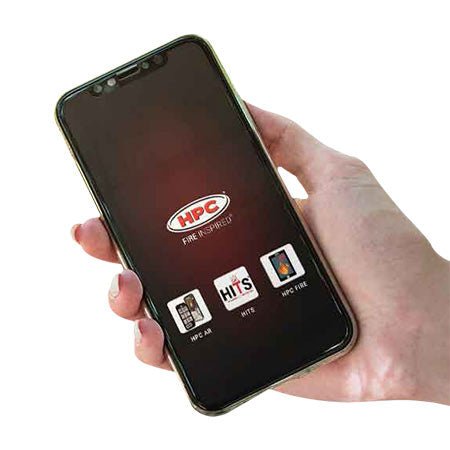
Electronic Ignitions
The most elaborate type of fire pit ignition, both in terms of installation and the number of options available. We'll spend the rest of this guide breaking down how electronic fire pit ignitions work and the types available, so for now we'll just say that electronic ignitions use an external electrical supply and can be controlled via wall switch, remote control or phone app, depending on the specific model.
Electronic Fire Pit Ignition Voltage
While all electronic fire pit ignitions use an electrical supply to operate, there are many varieties on the market using different voltages and current types. Each of these electronic ignition types are designed for different use cases. In this section of the guide, we'll be analyzing each voltage type, how they work and which types of project they're best suited for. To start with, we'll outline how an electronic ignition works:
- Power is supplied by the electrical connection, activated by a wall switch or other control mechanism.
- The hot-surface igniter converts that electrical energy into heat energy and begins glowing.
- Gas is released to the pilot light.
- The pilot ignites, using the heat from the igniter.
- The flame sensor is heated by the pilot, sending an electrical signal to the control module.
- The control module sends a signal to turn on the fuel supply to the burner.
- The pilot light ignites the fuel coming from the burner, lighting the fire pit.
Fire Pit Voltage Options
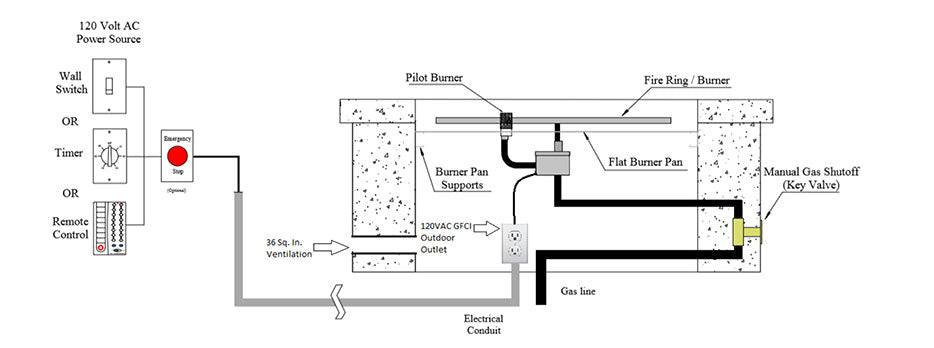
120/110VAC
The most straightforward option, these types of electronic ignitions plug directly into an outdoor outlet, making them probably the easiest to install. Typically the outlet is concealed inside the fire pit. A transformer comes built into the system so it can use a standard three-prong plug. It's important to note that this type of ignition is not code-approved for use near a swimming pool because of the voltage involved.
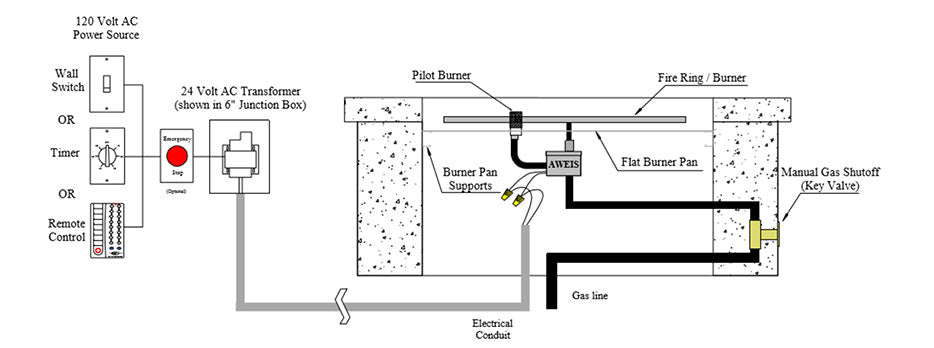
24VAC
These ignition types use a lower voltage but are still restricted from installation within 6 feet of a swimming pool. They use a transformer to step down the voltage from the source. They're a good option for installations where there will be more than one fire feature in the same location, such as a commercial dining patio or a home with multiple gas fire bowls or torches.
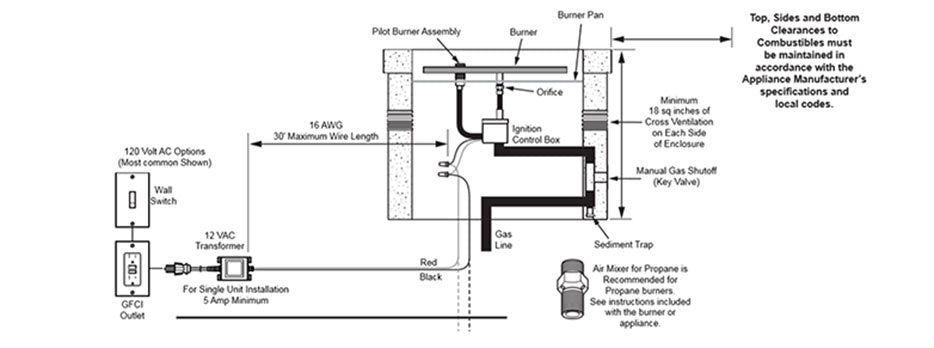
12VAC/15VAC
This voltage level is approved for installation within 5 feet of a swimming pool, making them a popular choice for those looking to create a poolside relaxation zone. It otherwise operates much the same as a 24VAC ignition, using an upstream transformer to reduce the voltage to the desired level.
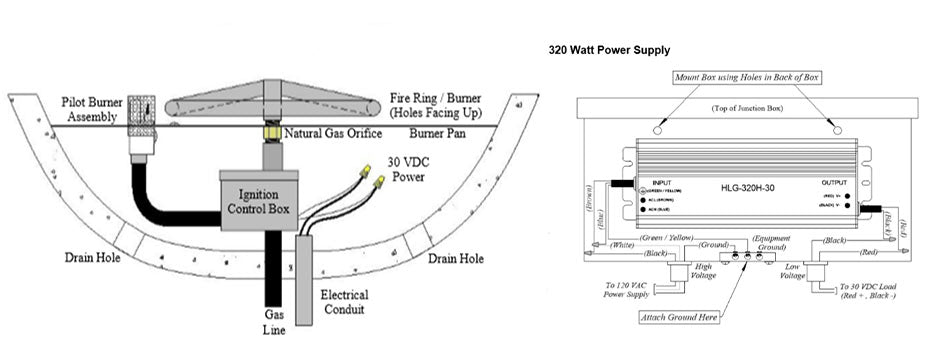
30VDC
While the other types listed above use alternating current, this style of igniter uses direct current, which can offer greater reliability. Also approved for use within 5 feet of swimming pools, a 30VDC fire pit ignition can be used in most of the same applications as a 12VAC/15VAC model.
Electronic Fire Pit Ignition Control Options
Once you and your client have settled on a voltage for the electronic ignition fire pit, you'll need to decide what type of control option you'd like to install. In most cases, controls are installed on the 120V side of the electrical supply and simply turn power on and off to control the fire feature. There are a wide array of options and compatibility can be dependent on the specific brand and model of fire feature you're installing, so these are just a few general notes about the possible choices:
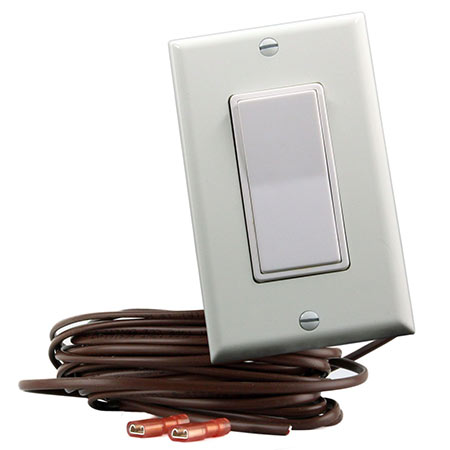
Wall Switch
The simplest option, a wall switch is a great option for controlling a gas fire pit. Simply wire it into the system and your customer will be able to turn on their fire pit with a literal flip of a switch.
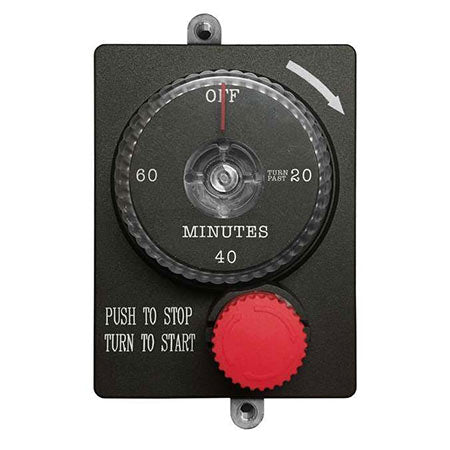
Timer
Slightly more complex and flexible than a wall switch, a timer is a great choice for commercial installations like an AirBnB because of the added safety it provides.
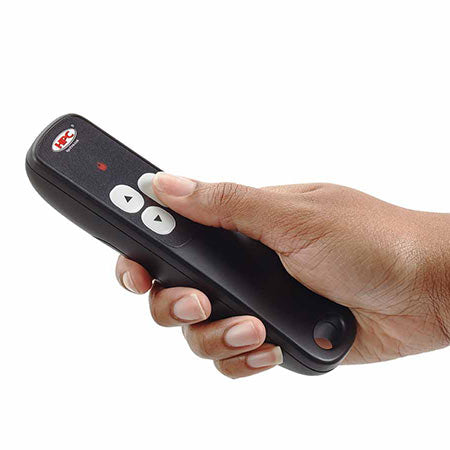
Remote Control
If your client is looking for something that's a little more convenient, a remote control might be the best option. They are a bit pricier, but they offer some flexibility that other options lack.
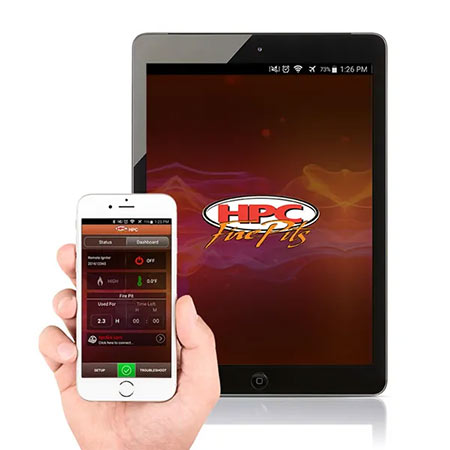
App Control
A select few brands and models can be controlled via a phone app, making them a convenient choice for those who like modern tech and home automation.
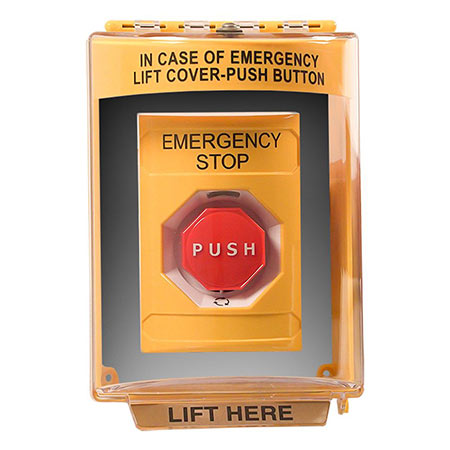
Emergency Stop
In some commercial installations, local code may require the installation of an emergency stop button. Most of the time, the e-stop kills the power, thereby extinguishing the gas and flame. E-stops may also be installed on the main gas feed to shut off multiple appliances that don't share an electrical control. Please refer to your area regulations to see if they're necessary for your project.
Help Finding the Right Ignition for any Fire Pit
This is just a high-level overview of the market for fire pit electronic ignition voltage and controls. Any given installation project is likely to have a few more questions that need answering, which are too numerous for us to cover in their entirety here. If you need more help in selecting the right electronic ignition for your next fire pit project, our expert team is here for you. Get in touch with a SpotixPro rep today at 319-626-5292 to get started.
